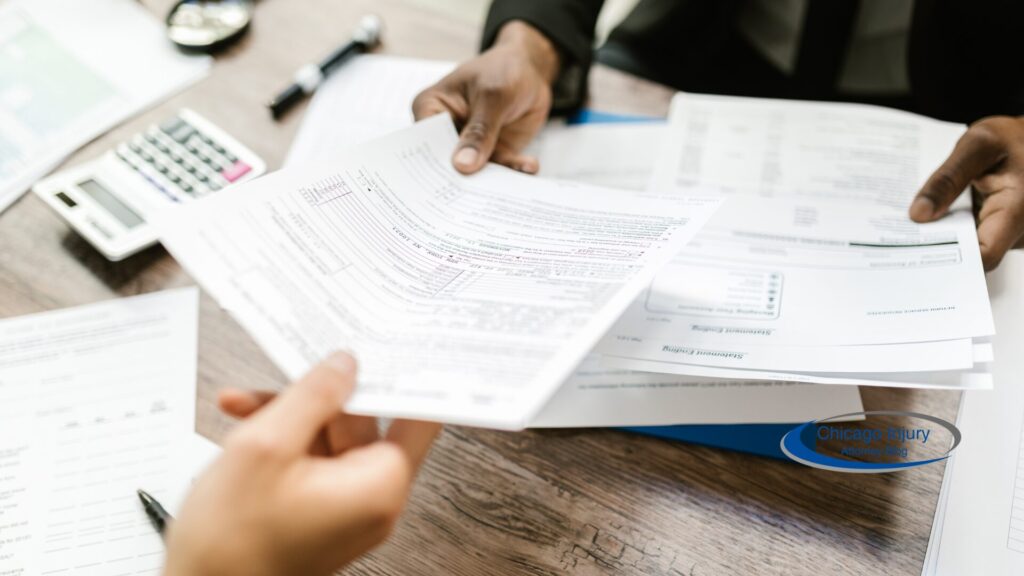In personal injury cases, thorough documentation is essential to protect one’s rights and ensure justice is served. It is vital to document your personal injury at every step, from documenting the incident scene to seeking medical treatment and preserving physical evidence, as this is crucial in constructing a solid case.
Utilizing witness statements and keeping meticulous records can significantly impact the ability to prove one’s case. Understanding the significance of documenting personal injury incidents and implementing necessary steps is vital in safeguarding one’s rights.
Importance on How to Document Your Personal Injury
Recognizing the importance of thorough documentation in personal injury cases is essential for pursuing compensation through legal channels. Effective documentation is crucial for substantiating claims and ensuring appropriate compensation for damages suffered. By carefully recording and preserving evidence relating to the injury, individuals can strengthen their legal position and establish liability when required.
Comprehensive documentation also assists in presenting a detailed account of the incident, its timeline, and the impact on the individual’s life. This documentation may include medical records, injury photographs, witness statements, and other pertinent paperwork. Proper documentation aids legal representatives in presenting a compelling case to insurance firms or in a court of law, serving as the basis for demonstrating the extent of losses incurred and attributing responsibility to the liable party.
Ultimately, the quality of documentation significantly influences the outcome of personal injury cases.
Immediate Actions for Documenting Evidence
Taking immediate steps for scene documentation is important to preserve valuable evidence after an accident. Quick and thorough documentation of the accident site, damages, and injuries can significantly impact the strength of a case and liability assessment. It is crucial to document the details while they are still fresh to preserve critical evidence for a personal injury claim.
Properly documenting the scene may involve taking photographs from various angles to capture the extent of damage and injuries. Recording detailed notes about the sequence of events, weather conditions, road signs, and any witness statements can further support a case. Including timestamps on the documentation helps establish an accurate timeline. This documentation not only assists with an insurance claim but also serves as crucial evidence in legal proceedings. By diligently preserving evidence, a fair evaluation of liability can be ensured, increasing the chances of a successful case outcome.
Seeking and Recording Medical Attention
Receiving timely medical attention after sustaining an injury is essential, not only for personal well-being but also for the documentation process in a personal injury case. Keeping thorough medical records, including an injury diary, can offer a comprehensive overview of the injuries and treatment received, serving as valuable evidence in a legal claim. Seeking guidance from a personal injury attorney early on can also provide insights into the importance of accurately documenting injuries.
In an injury diary, it is advisable to record specific details such as the date and time of the injury, symptoms experienced, medical treatments administered, and any persistent pain or discomfort. This diary can assist in monitoring the progression of injuries and identifying challenges encountered during the recovery process.
When documenting medical information for legal purposes, it is crucial to ensure accuracy by including details such as the names of healthcare providers, dates of appointments, prescribed medications, and recommended follow-up care. By maintaining precise records and collaborating closely with legal professionals, individuals can establish a solid foundation for their personal injury case.
Utilizing Witness Statements
Utilizing witness statements can be a valuable strategy in bolstering your case and offering supplementary evidence to reinforce your legal claim.
Witness testimony can be instrumental in determining liability and substantiating the circumstances of the personal injury incident. For example, a thorough statement from an eyewitness who witnessed the accident can provide valuable details on the sequence of events.
Effectively documenting these testimonies is crucial to guarantee their trustworthiness. Keeping detailed records, noting down the witnesses’ contact details, and securing their signatures on the statements can all enhance the credibility and validity of your injury case.
Preservation of Physical Evidence
Preserving physical evidence in personal injury cases is important for maintaining essential proof of damages and injuries. Properly documenting and safeguarding physical evidence, such as damaged property or personal belongings, can significantly bolster a claim and validate the extent of losses. Ensuring physical evidence is preserved helps prevent key aspects of a case from being compromised or lost over time.
To maintain the integrity of evidence, following specific guidelines is crucial. Taking detailed photographs from multiple angles to capture the incident scene and any relevant injuries is essential. Safeguarding physical objects linked to the accident, such as a damaged vehicle or defective product, can be critical. Keeping thorough records of medical reports, receipts, and bills also strengthens a case. These proactive measures not only safeguard evidence but also enhance the credibility of an injury claim.
Documenting Injuries: Before and After
The process of documenting injuries both before and after an incident is essential for establishing a strong injury case and substantiating claims. Thorough documentation of injuries, which includes detailed records of the physical and emotional repercussions, is crucial in demonstrating the extent of damages suffered. Recognizing the significance of documenting injuries pre and post-accident is vital in ensuring the rightful compensation.
By capturing the effects of injuries through photographs, medical records, and personal journals, individuals provide concrete evidence of the harm they have experienced. Maintaining detailed records not only assists in presenting a coherent narrative of the incident but also helps in illustrating the progression of damages over time. Starting from documenting initial medical treatments to displaying ongoing therapies and their outcomes, this documentation provides a comprehensive overview of the injury’s consequences, strengthening the case.
Maintaining a Detailed Journal
Maintaining a detailed record through journaling is a proactive approach to documenting damages and injuries in a personal injury case. An injury diary can serve as a comprehensive repository of experiences, pain levels, medical treatments, and emotional struggles, providing a holistic view of the impact of the injury. Keeping a detailed journal plays a crucial role in illustrating the ongoing effects of the injury on daily life.
Consistently recording details such as the date, time, location of the incident, and the names of individuals involved creates a timeline that can be invaluable in legal proceedings. Descriptions of symptoms, discomfort levels, and their impact on daily activities can showcase the true extent of suffering. Documenting interactions with healthcare providers, treatments received, and any progress or setbacks can demonstrate the journey of recovery and the challenges faced along the way.
Communicating and Documenting Interactions
The importance of documenting all communication related to the injury cannot be overstated.
Keeping a record of conversations, correspondences, and interactions with relevant parties is crucial for supporting your injury claim and providing a comprehensive overview of the case’s progression. Effective communication documentation ensures clarity, transparency, and accuracy in legal proceedings.
By maintaining accurate communication logs, individuals can establish a clear timeline of events, demonstrate the extent of their injury claim, and showcase the interactions that occurred throughout the process. Documenting each conversation and preserving evidence not only strengthens the case but also helps in avoiding misunderstandings or disputes related to the incident.
Utilizing Police Reports
Recognizing the importance of official police reports as documentation is crucial in personal injury cases involving legal proceedings. Police reports offer an unbiased overview of the incident, detailing damages, injuries, and witness statements, which can serve as valuable evidence in insurance negotiations and legal disputes. Incorporating police reports can enhance the credibility and strength of an injury claim.
These reports are vital as they provide a detailed and impartial record of the accident, outlining the sequence of events and identifying the parties involved. When utilizing police reports, it is essential to carefully examine the information provided, noting any discrepancies or inaccuracies that could affect the case. Using these reports during negotiations with insurance companies can help substantiate the claim and demonstrate the extent of injuries and losses. In legal proceedings, presenting a comprehensive police report can significantly bolster the case and strengthen the position when seeking compensation.
Managing Social Media Presence
It is important to exercise caution and employ strategies when managing your online presence during a personal injury case to protect your legal interests. Opposing parties can potentially use your social media activity and posts as evidence to challenge your injury claim. By adhering to documentation tips and being mindful of your online presence, you can safeguard the integrity of your case and avoid complications in legal proceedings.
Keep in mind that even seemingly innocent posts or comments can be misinterpreted or taken out of context in a legal context. Therefore, it is recommended to abstain from discussing the specifics of your case or injuries on social media platforms. Instead, focus on sharing general updates or positive aspects of your life to maintain a positive online image. Regularly review your privacy settings to manage who can access your content, and consider pausing or limiting your social media activity until your case is resolved.
Seeking Legal Guidance
The assistance of legal counsel in guiding individuals through the documentation process plays a crucial role in personal injury cases. Seeking experienced legal guidance early on can assist in navigating the complexities associated with documenting evidence, understanding rights, and preparing a strong injury claim. Legal counsel offers vital support in ensuring that documentation aligns with legal standards and enhances the likelihood of a successful outcome.
Having legal experts supporting an individual can simplify the process of collecting medical records, witness statements, and other essential evidence needed to construct a strong case. Their expertise facilitates a comprehensive evaluation of the extent of injuries and losses, which is critical in determining the appropriate compensation.
Early involvement of legal professionals also helps in addressing legal complexities and potential obstacles that may arise, providing individuals with peace of mind and confidence in the progression of their injury claim.





